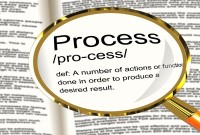- Home
- Business Processes
- Industry Knowledge
- Aerospace Industry
- Automotive Industry
- Banking Domain
- BFSI Industry
- Consumer/ FMCG Industry
- Chemicals Industry
- Engineering & Construction
- Energy Industry
- Education Domain
- Finance Domain
- Hospitality Domain
- Healthcare Industry
- Insurance Domain
- Retail Industry
- Travel and Tourism Domain
- Telecom Industry
- Leadership Skills
- eLearning
- Home
- Leadership
- Leadership Styles
- The Five Bases of Power
The Five Bases of Power
In this study of power, Raven identified five bases of power as coercive, reward, legitimate, referent, and expert. The 5 Types of Power can help you decide when it is appropriate to use a particular type of power in important situations. Leadership involves authority and it is very important for leaders to understand what type of power they're using.
“There should never be any need for a leader to tell other people how powerful and influential he or she is. … Yes, leaders are power brokers. But they are power brokers on behalf of people they lead.”
—Jim Kouze and Barry Posner
The use of power is integral to leadership success, but what power actually is? Is power a synonym to influence, coercion, control, and authority? Power is the ability to exercise influence or control over others. Leadership involves authority and it is very important for leaders to understand what type of power they're using.
Noted social psychologists John R. P. French and Bertram Raven conducted a study in 1959 and concluded that power can be divided into five different forms. The 5 Types of Power in Leadership are Coercive power, expert power, legitimate power, referent power, and reward power. Later on, they added one more power called informational power to the list.
Authority is the right to command and extract obedience from others. It comes from the organization and it allows the leader to use power.
In the functioning of a leader, the ability to guide the action of others is achieved through his or her authority. Carrying out of these decisions is accomplished because of the power of the leader.
Leaders combine five sources of power inappropriate ways to achieve both short- and long-term goals. You will see the relationship between the authority and power of a leader as we go further to understand various types of power.
1. Legitimate Power:
This power comes to the leader when the organization’s authority is accepted. It comes from the rules of the organization. For e.g. parents, teachers, managers, police, etc. have legitimate power only when their authority is accepted in the positions they hold.
2. Expert Power:
This source of power stems from one’s expertise, skill, and knowledge. This is the power of knowledge and skill of special kinds that is important in getting the job done. A person’s professional competence or knowledge gives him or her expert power. Leaders of professional workgroups—engineering, finance, techno-functional, domain knowledge experts, human resources, and so on rely heavily on this type of power for their success. The credibility increases with expertise and one can lead other persons to trust the judgments and decisions taken by the leader. A leader may not be an expert in all fields, but one can certainly take the help of experts in particular fields as and when required.
3. Charismatic Power:
This is the power of attraction or devotion, the desire of one person to admire another. A leader high in this source of power is liked or admired by others based on personal traits. A subordinate feels a positive attraction towards a leader by identifying oneself, with the leader, or gets influenced by the leader’s attractive power. This power is based on a belief in, admiration for, or identification with the leader. This power helps the subordinate to understand and value the leader so much that one understands and acts according to the expectations of the boss or the leader. It helps one to act as one’s own boss, and behave in ways one thinks the boss will want.
4. Reward Power:
This power is the present or potential ability to reward for worthy behavior. This power is based on the leader’s ability to provide rewards, real or intrinsic. The superior or the leader has the power to give tangible rewards such as promotion, office space, time off from work, attractive work assignments, and help to the subordinate. Also, psychological rewards like praise, appreciation, approval, and recognition can be given by the leader or the superior to the subordinate. The subordinate has to believe that the leader has access to higher authorities; therefore, the leader can give rewards. This reward power of the leader can also increase the leader’s charismatic and legitimate power. In organizations, rewards are often positive incentives such as pay, promotion, or recognition.
5. Coercive Power or Punishment Power:
This is the ability to threaten or punish. This power is based on fear of the leader. The leader has the authority to control potential punishments like undesirable work assignments, reprimands, or dismissal. There will always be circumstances in an organization when a leader needs to exercise some form of coercive power in difficult situations. The leader can give tangible punishment like dismissal, demotion, low rating, less satisfying work assignments, etc. He may also give psychological punishments like criticism, avoidance, disapproval or satirical remarks, etc. on the subordinate. The reward power helps to avoid something undesirable. The self-esteem of the subordinate will increase because of reward power. It also decreases because of punishment or coercive power.
The overuse of this type of power will damage a leader’s ability to get results, especially if the leader is relying on others to use judgment and discretion on the job. Even a subordinate may withdraw or break the rules or become hostile. One may not feel attracted to the charismatic power of the leader and at times may ignore the leader’s legitimate power. Having seen the reasons for differences between the authority and power of the leader, you should know the type of leaders as understood on the basis of their authority and power.
Understanding the power dynamics a leader can choose to act like a boss or function like a partner. In some situations, he can even play the role of the coach. Besides the power aspect one should also account for the following:
Formal Leader & Formal Sources of Power:
A formal leader is selected by the organization. A formal source of power is based on the authority of one’s position within the organization. For example, a manager is a formal leader by virtue of the authority coming from the organization. Managers use this power to expect their subordinates who are working under their authority within the organization, to act upon their commands, requests or demands. He or she influences others to help accomplish the goals of the organization or unit. Such leadership lasts over a long period of time because the traditional organizational charts and job descriptions formalize this type of power.
Informal Leader & Informal Sources of Power:
An informal leader is chosen by the group. Thus, all managers are leaders if their authority is accepted, but not all leaders are managers. Informal leadership is leadership without position and may shift from one person to another. It may last for a brief time. Most people are leaders at one time or the other and they can have an influence on others as defined by the concept of leadership itself.
The ideal leader is the one who can combine formal and informal leadership simultaneously within himself or herself.
Why reward power works?
Reward power is the most commonly used power in modern organizations. Reward Power is the ability or capability of the manager to decide the reward, increment, or other benefits to the employee to keep him motivated. All organizations establish some kind of process to ensure managers are able to influence the benefits that will be given to the employees based on their performance. The anticipation of this reward from the manager can encourage employees to put their best to achieve organizational objectives. Rewards may also be of non-financial in nature like a pat on the back, recognition in front of the team, nomination to some training, increased exposure to leadership, opportunities for development, and increased job responsibility. Reward power works because it enables managers to provide something that the employees want for the fulfillment of their needs or wishes.
Advantages of power in leadership
One of the most important tasks of the manager is to get work done to meet organizational goals by motivating employees. Reward power gives leaders the power to exert influence on subordinates by having the power to reward excellence or good work. Leaders must be able to influence their followers to achieve greater performance and drive important decisions across organization bureaucracy. Leaders use various types of powers to influence up, down, and across the organization, impacting business results by driving behavior change.
Overuses of coercive power
Coercive power is the ability to threaten or punish. The leader ensures compliance by giving punishment like dismissal, demotion, low rating, less satisfying work assignments etc. The self-esteem of the subordinate will decreases because of punishment or coercive power. The subordinate may withdraw or break the rules or become hostile. Coercive power should be exercised very carefully and in a discreet manner because abuse or overuse of coercive power may lead to resistance by the followers. The overuse of this type of power will damage a leader’s ability to get results, especially if the leader is relying on others to use judgment and discretion on the job.
What are the 3 types of power in the workplace?
In the workplace, one can experience primarily three types of power in operation; Role power, Expertise power, and Relationship power. Role power comes from the position one holds and the authority attached to it. Expert power is associated with the dependency one creates due to expertise and the relationship power is developed over a course of time by influencing others.
Bases of power in organizational behavior
The 5 Types of Power one can observe in organizational behavior are coercive power, expert power, legitimate power, referent power, and reward power. Bases of power are the authority that comes from an organization and it allows the leader to use power. This organizational authority gives the right to the leader to command and extract obedience from others.
What are the similarities and differences between the five bases of power?
The three powers viz. legitimate, reward, and coercive power falls within the formal category by virtue of the authority coming from the organization. Whereas charismatic power and expert power fall under the informal power of leadership which is cultivated by the leader and exists without position and may shift from one person to another or even may last only for a brief time.
Related Links
You May Also Like
-
David Kolb produced this popular model for learning in 1984. The model suggests four stages of learning which most learners go through in order to learn effectively. Leaming is itself a process of change. Something is added to our perception and prepared us for the next impression, which will change our understanding yet more, however minutely. The Kolb contribution is a significant one because it practically equates change and learning.
-
The ten most important qualities that define a good leader are self-awareness, interpersonal and communication skills, ethical values, organizational consciousness, self-confidence, adaptability and flexibility, imagination and creativity, focus & result-orientation, continuous self-development and accountability and ownership for his actions. These ten qualities of leadership every good leader should possess to a certain extent and must continually strive to develop them.
-
Strategic Contingencies Theory is a theory of intra-organizational power. The power of a subunit or individual depends on a few contingencies and that the more contingencies are controlled by a subunit, the greater is its power. The theory focuses on tasks that need to be done in the form of problems to be solved, thus de-emphasizing personality.
-
Reciprocal influence theory also known as reciprocal determinism is authored by Albert Bandura and states that an individual's behavior influences and is influenced by both the social world and personal characteristics. Three factors that influence behavior are the environment, the individual, and the behavior itself. Certain leader behaviors can cause subordinate behaviors and reciprocal influence on the leader by the group.
-
The Fiedler Model of leadership is a contingency theory and states that a leader's effectiveness is based on the situation. There is no one best style of leadership and the effectiveness of a leader in an organization depends on matching the leader to the situation. Leaders should determine the natural leadership style and assess the situation to flex the style.
-
In this study of power, Raven identified five bases of power as coercive, reward, legitimate, referent, and expert. The 5 Types of Power can help you decide when it is appropriate to use a particular type of power in important situations. Leadership involves authority and it is very important for leaders to understand what type of power they're using.
-
Situational Leadership - Application
Situational Leadership Theories are well known and frequently used for training leaders within organizations. Practical application is how to choose the right leadership approach for the situation. The theory emphasizes leader flexibility and advises leaders to flex their style based on the followers' needs. Leaders must adapt their leadership style to fit the prescribed task, understanding given situation/maturity of followers.
-
Transactional Analysis also is known as the theory of human personality was proposed by Eric Berne in the 1950s. This theory of transactional leadership defines three different ego states in a person who engages in transactions with another person's ego states. These three ego states refer to major parts of an individual's personality and reflect an entire system of thought, feeling, and behavior.
-
According to the three-skill approach of Katz, the individual's leadership abilities vary depending on where leaders are in a management hierarchy. The practical implication of skills approach to leadership is that leaders can improve their capabilities in leadership skills through training and experience.
-
Leadership traits refer to personal qualities that define effective leaders. Here are the major leadership qualities that can make someone a good leader. Five key traits that are common in leaders can be learned and sharpened with time.
Explore Our Free Training Articles or
Sign Up to Start With Our eLearning Courses

About Us
Learning
© 2023 TechnoFunc, All Rights Reserved










